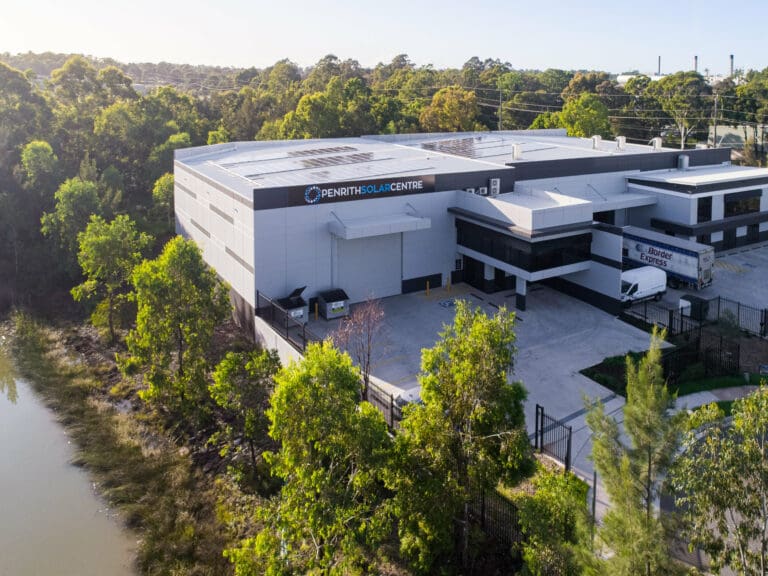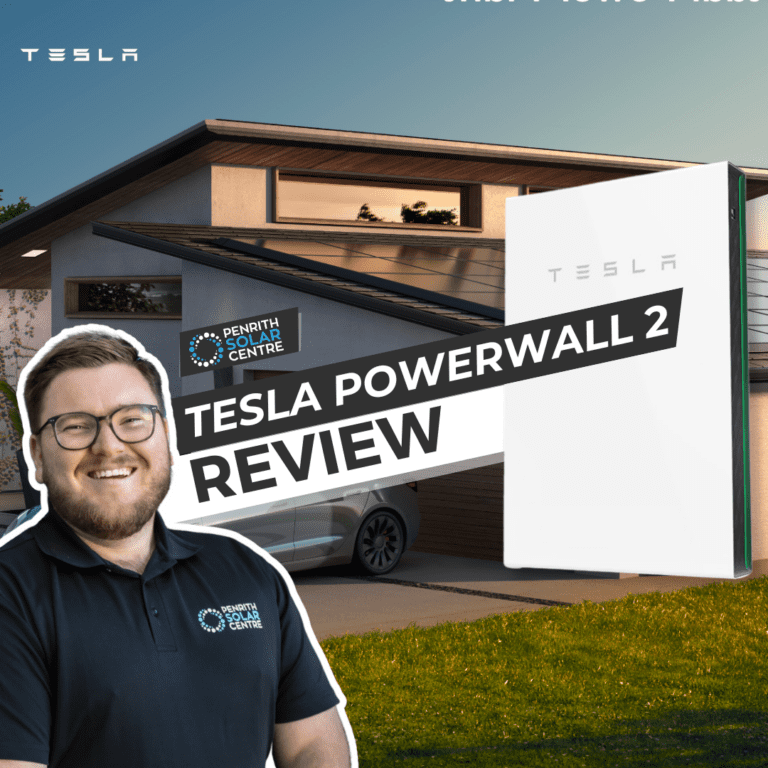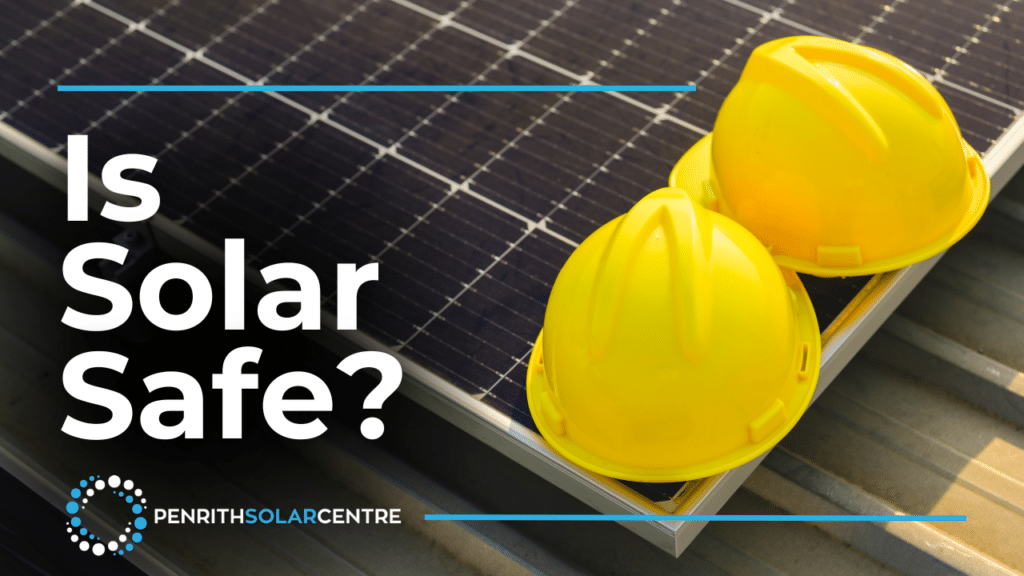
Most of the time, solar panels are extremely safe. Unfortunately, not all solar systems are comprised of the same components or installed by the same sure hand.
At Penrith Solar Centre, we sell Enphase microinverter solar systems because they’re safer for your home than string inverter solar systems. Full stop. We won’t sell you anything we wouldn’t trust on our own homes.
We recently sat down with our Director and Founder, Jake Warner, for a chat about how solar is safe to install on your home. It’s an issue that’s extremely important and a crucial part of his decision to stop installing string inverter solar systems years ago. He had some strong words, backed by strong feelings, that are also backed by science.
In this article, you will learn:
- Disclaimer: What We Talk About When We Talk About Safety
- Which Is Safer? AC Power or DC Power?
- Is It Safe to Hire a Subcontractor to Install My Solar?
- Does Enphase Have Rapid Shutdown?
Jake Warner’s thoughts on this were so comprehensive that we simply let the recording of our conversation speak for itself.
By the end of this article, you’ll have a comprehensive understanding of what Jake considers safe for your home, his home, and why.
Disclaimer: What We Talk About When We Talk About Safety
Just a quick disclaimer to define what Jake’s discussing in this article:
When you Google “Is solar safe?” you get some wild answers that are wildly different from each other. They even often cite credible sources. There are many opinions that are backed by science (and many that aren’t).
This article discusses safety in terms of electrical fires that could burn your home down. This is not about which type of current will kill you faster, which is what the debate online seems to be preoccupied with.
In the right circumstances, any type of electricity can kill you. That’s why you should always hire experts who know how to wield it. Like us.
The question of what type of electricity is safer goes back to the 1800s. Thomas Edison championed direct current (DC) and Nikola Tesla was the champion for alternating current (AC). At the time, DC power could only travel short distances efficiently. AC power, which can be transformed into higher or lower voltages, made long-distance travel of electricity possible.
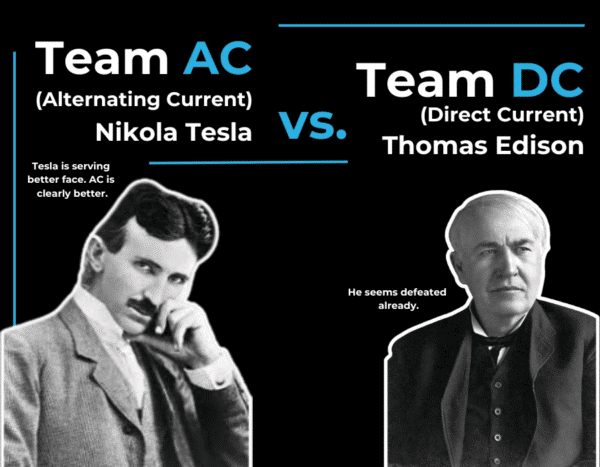
The debate effectively started between two very intelligent minds trying to make money and smear, tarnish, and discredit the other’s technology. There was a lot of propaganda in the years since for either side of the argument. The debate continues to this day without a proper definition of safety.
If you’re interested in checking in with a third party about the safety of solar components, you might want to look at the following page from NSW Government titled, Solar panel retail and installation.
There’s another one that’s pretty good titled, Guide to safe solar panel installation.
Which Is Safer? AC Power or DC Power?
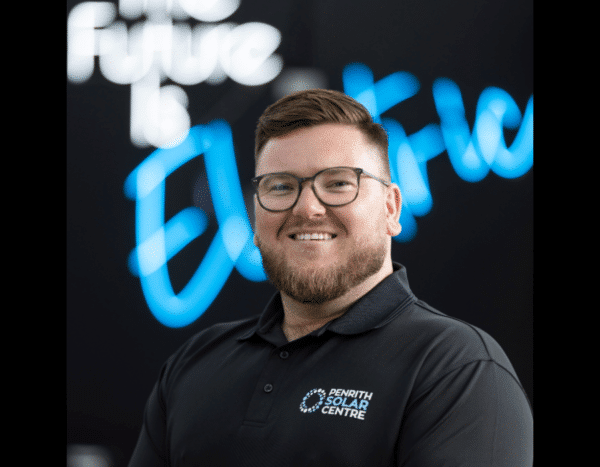
Well, firstly, we want to make it very clear to our audience that we only install Enphase microinverter solar systems. We do not, and have not, installed a string system for over three years now.
We are proud to be the largest Enphase installer in the Southern Hemisphere, and the topic of safety was the biggest reason I made the choice to make the move to Enphase microinverters.
When it comes to “Is solar safe?” there are two answers to that, and the bottom line is that every type of solar system — regardless of the type of technology and the risks they inherently have — can be installed to a high level of excellence and is probably completely safe.
Brief aside for clarity: The function of an inverter, whether it’s a microinverter or a string inverter, is to convert DC power to AC power. Solar panels harvest and output DC power, but all the lighting and appliances in your home run on AC power. Thanks, Nikola Tesla!
If you’re interested in learning a bit more about the differences between microinverters and string inverters, you might want to check out the following article titled, Microinverters vs. String Inverters: An Honest Comparison.
Each individual microinverter is mounted beneath each solar panel, whereas a string inverter is installed on the side of the home, usually near the main switchboard.
Now, when you install an AC system with Enphase microinverters, the conversion from DC power to AC power happens immediately at the solar panel as soon as that sunshine is harvested. Each microinverter takes the DC voltage and converts it to AC voltage which eliminates the risks of DC voltage.
In a string solar system, the inverter is on the side of the home, where this conversion process for the home takes place. It’s usually installed near the main switchboard.
It’s also a great moment to mention how AC power is different from DC power. This isn’t an issue of brand versus brand. This is science. The issue is direct current versus alternating current.
Direct current is steady. Think of it as a straight line from one point to another. The alternating current behaves like a sinusoidal wave. It’s positively charged for half of its frequency and negatively charged for the other half.

Because voltage in a DC circuit has a constant polarity (depicted in that straight line above), it’s unrelenting. A low voltage is still extremely dangerous, with 40 – 50 volts being enough to probably kill a person.
Can DC be installed safely? Absolutely, it can be.
But consider this: each solar panel in a string is capable of outputting 40 – 50 volts of power. When you combine that output together, you get a lot more volts. Combined, the residential limit is a whopping 600 volts that travel to the inverter on the side of the house, where it will convert that DC power to AC power for the home to use.
600 volts is a lot of potential power.
It’s perfectly safe if it is installed perfectly, runs perfectly, and exists in a perfect world where we have zero rodents like mice, rats, possums, or anything that can chew through DC cabling.
In a perfect world, DC voltage is perfectly safe. In a perfect world where no one ever works on your home and puts a screw through a bit of cabling, or in a perfect world where water does not get into isolators or connection points, and in a perfect world where electricians are 100% perfect and make zero mistakes and never cut corners, yes, it would, of course, be perfectly safe to install DC solar systems very safely.
We do not live in a perfect world. These issues will always happen. At some stage, you are going to run into some of these problems.
Now, if a rat was to chew an AC cable, the circuit breaker would simply trip. The rat may die, I’m not saying the rat won’t die, there is a possibility the rat could die, but if that AC circuit has a safety switch on it, it’s very unlikely that the rat will actually die from AC power.
Now, I’m not a cardiologist and I can’t tell you if it’s going to die, but the likelihood is far more likely with DC. I can almost guarantee you that that rat is going to be cooked inside out. And the reason for it is because there’s no protection. The rat will keep cooking until that circuit breaks or the sun goes down.
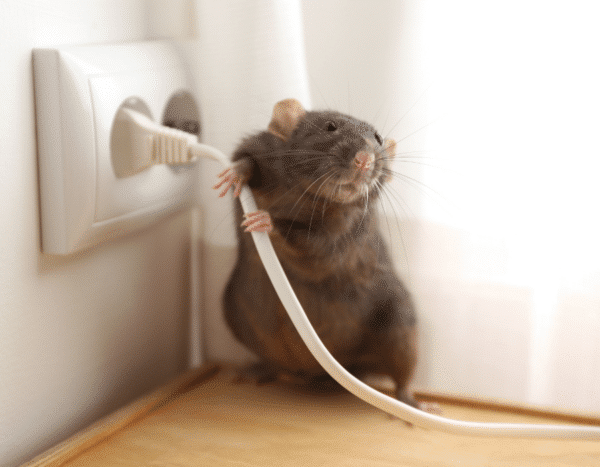
A compromised cable, compromised for any of the reasons I mentioned, can catch your insulation on fire, and it can ignite timber in your home. You know, it’s quite dangerous. These are some reasons why the rules are so much stricter when installing DC systems rather than AC systems. DC cables must be encased in a conduit. Unfortunately, rodents can still chew through that, and screws can still go through it too.
If you’re interested in learning a bit more about the differences between AC power and DC power, you might want to check out the following article titled, AC-coupled Battery vs. DC-coupled Solar Batteries.
Is It Safe to Hire a Subcontractor to Install My Solar?
It’s not just rodents you’ve got to look out for when considering the safety of your solar system, it’s the potential hazard of substandard electrical work. Unfortunately, this happens whether companies have in-house installers or subcontractors. Shoddy work is shoddy work. It is a total risk to the homeowner.
The thing about shoddy workmanship is that it’s brand-agnostic. It doesn’t matter whether you’ve installed great panels or terrible panels. It doesn’t matter whether you’ve got the best inverters in the world or terrible inverters. The workmanship is the workmanship.
I’ve seen the best products installed poorly, which last a couple of years. I’ve also seen poor products installed very well, which were proven to stand the test of time, right? So, installation quality is a big, big part of your safety.
When you install an AC system versus a DC system, there’s a different sticker that gets put on your switchboard. One of them says PV AC and the other says PV DC (PV stands for photovoltaic system (solar system)).
It’s telling the fire department that there are two different types of systems present on the property or that sticker will allow them to identify which one your home has.
When it has the PV AC sticker, the fire department knows that when you turn off that main switch, you truly turn off every single panel on the roof.
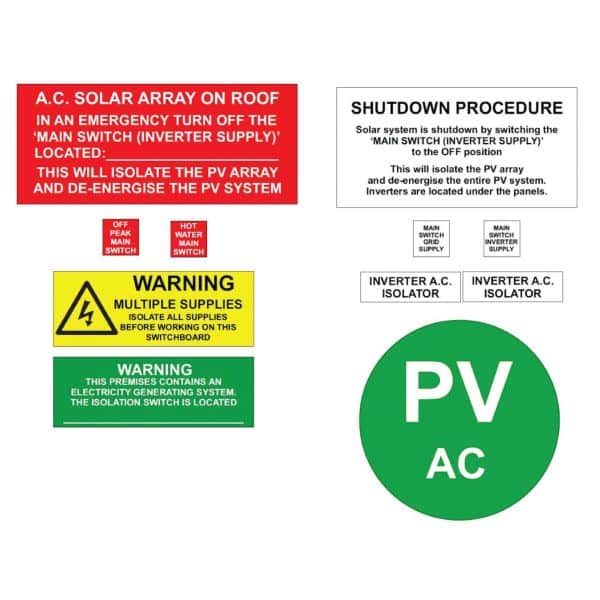
When it says PV DC, they know that that’s not possible. You turn off the main switch, you still have that potential 600 volts present at the inverter on the side of the house.
Brief mention: If you’re interested in learning a bit more about how firefighters evaluate and fight electrical fires related to poorly installer solar systems, you might want to check out the following article from the good folks at the Los Angeles Firemen’s Relief Association titled, Solar Safety for Firefighters: The Myths and the Facts.
Fortunately, standards are quite strict and tough (as they should be), and a lot of the cowboys that did shoddy work no longer are in the Australian solar industry. But there are still accidents that happen.
In order to reduce the risk as much as we possibly can, we just don’t install DC. I wouldn’t put it on my own home, and I certainly won’t put it on anyone else’s home.
I’ll challenge you to Google “AC solar fire” or “Enphase microinverters solar fire” and tell me what you find. Today, I cannot find a single image or testimonial about a microinverter starting a fire.
But if you type in “DC string inverter fire” or “string inverter fire” or “DC arc,” you’ll find a ton, in fact, hundreds of homes that are burned down because of it.
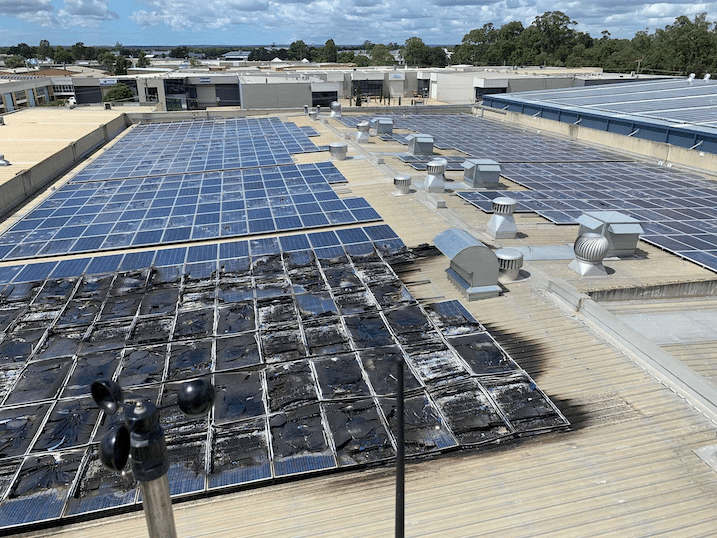
So, it’s no secret that AC is far safer. The benefits far outweigh DC, and ultimately, people who buy DC thinking that they know more than someone like me or a company like Penrith Solar Centre are foolish and don’t value their family’s safety as a high priority.
If they value saving the extra $1,000 in their pocket by investing in a string solar system over the safety of their family, they should probably really, really reconsider some of the risks.
If you’re interested in learning a bit more about the differences between an in-house installer or a subcontractor and the quality of work you can expect, you might want to check out the following article titled, In-house Installers vs. Subcontractors: Which is Better?
Does Enphase Have Rapid Shutdown?
Enphase microinverter solar systems have a great feature called Rapid Shutdown. There are only two inverter systems in the world that offer it: SolarEdge and Enphase.
SolarEdge is a DC power solar system. We don’t install SolarEdge because of our safety concerns.
SolarEdge will still give you 1 potential volt of power per panel. The difference in SolarEdge Rapid Shutdown is that this system is trying to break the DC circuit. Their technology can’t turn off the panels fully.
So, if you have 50 panels, even with SolarEdge Rapid Shutdown, you’ve still got 1 potential volt coming from each panel, which equals 50 volts. That’s still a decent presence of voltage. It’s still enough to start a fire or kill a person if they touch it.
Enphase, obviously, also has Rapid Shutdown, but it’s a little different in an AC system.
Enphase will truly give you 0 volts. It will shut the system off at each panel, and the microinverters will not produce any electricity. There is nothing travelling to the home, there isn’t any potential voltage in the wiring.
If you’re interested in learning a bit more about the Rapid Shutdown feature for Enphase microinverters, you might want to check out the following article titled, The sun shines bright on rooftop solar in Australia with Enphase.
Spark My Words: Microinverters Are Safe
Now you know all about the safety of solar from a certified expert. When you’re choosing equipment for your solar system, making the choice between AC power or DC power is important and has potential repercussions. The same goes for who you choose as a solar installer and whether to invest in components that have shutdown features.
Different customers have different definitions of what is risky. For some, saving money upfront is important so they’ll roll the dice on subpar goods and services. It really depends on what your priorities are.
Jake’s studied electricity every day since he was 16. Microinverters are safer by a long shot. That’s why we exclusively install them.
At Penrith Solar Centre, we understand how many different choices go into your solar journey. Our team listens and learns from you when you reach us and works with you to meet your unique energy needs and goals.
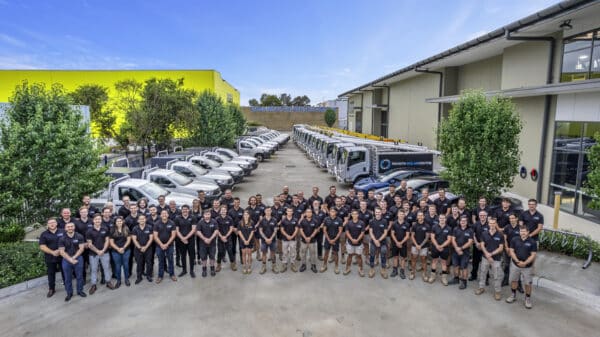
If you’re interested in learning a bit more about how AC and DC power behave and how they behave with other solar components like batteries, you might want to check out the following article titled, AC-coupled Battery vs. DC-coupled Solar Batteries.

